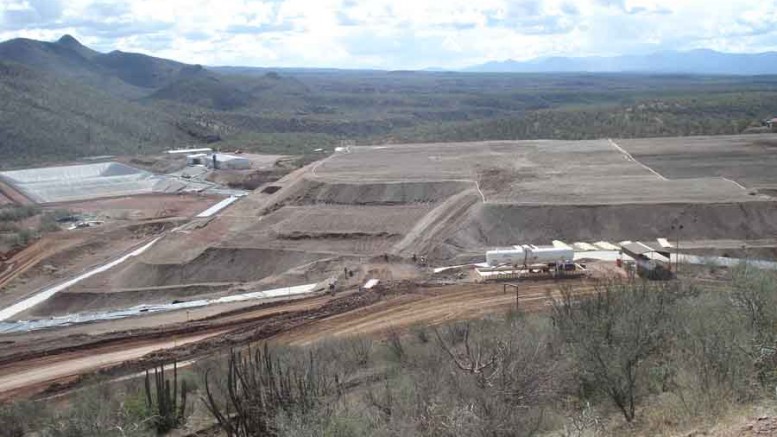Sandstorm Gold (SSL-V) is not an exploration or operational mining outfit. The company is not interested in spending equity capital on surface exploration, drill programs or environmental-impact studies. Instead, Sandstorm took the idea of commodity streaming, and generated a 189% net earnings increase in the fourth quarter of 2011.
In early March, The Northern Miner covered a presentation on royalty-based financing and commodity streams by big-time players Franco-Nevada (FNV-T), Silver Wheaton (SLW-T, SLW-N) and Royal Gold (RGL-T, RGLD-Q).
The corporate-streaming model is a form of project financing wherein a lending company provides an exploration or advanced-stage resource company with the capital to fund project development in return for a percentage of future commodity output, or stream. It allows the borrower to diversify from traditional equity and debt financing options and provides access to alternate cash sources.
Sandstorm makes a lump-sum payment upfront and delivers fixed-sum payments to the operator over the mine life to assist with average cash costs. In return, the company acquires a percentage of the project’s future production — in this case, gold.
The profit theory behind the model is that a streaming company like Sandstorm passes the inherent risks of cost inflation to the operator through the fixed-payment schedule. Shareholders thereby benefit from a rise in gold prices or output, but avoid the inherent pit-falls of rising production costs, regional taxation and maintenance.
So far, it seems to be working.
Sandstorm is turning into a rising star in the gold-streaming business. The company posted record sales exceeding 18,500 oz. gold in 2011 — a 697% increase over 2010 sales figures — and saw fourth-quarter net earnings skyrocket 189% to US$4.1 million. Fourth quarter average cash costs were US$407 per oz. gold, resulting in cash-operating margins of US$1,276 per oz.
According to chief executive officer Nolan Watson, Sandstorm has five of its seven gold streams in production, with all active streams in the ramp-up stage. The company expects increases in cash flow and production numbers this year. Watson said in a conference call that forecasted gold sales are between 25,000 oz. and 35,000 oz. gold for 2012, and should increase to 50,000 oz. gold by 2015.
Watson’s “five streams” are: Luna Gold’s (LGC-V) Aurizona gold mine in Northern Brazil; Silvercrest Mines’ (SVL-V) Santa Elena gold-silver mine outside of Hermosillo, Mexico; Brigus Gold’s (BRD-T, BRD-X) Black Fox gold mine in Ontario’s Timmins gold district; Santa Fe Gold’s Summit gold mine in southwestern New Mexico; and Rambler Metals and Mining’s (RAB-V) Ming gold mine in Newfoundland.
Sandstorm has stakes in two Quebec-based gold streams scheduled for production by early 2013: Metanor Resources’ (MTO-V) Bachelor Lake gold project outside of Val-d’Or, and Xstrata’s Bracemac-McLeod polymetallic project in the Matagami mining district. The Bracemac-McLeod streaming contract is with Donner Metals (DON-V), though its joint-venture partner Xstrata will handle operations.
Under the seven agreements Sandstorm retains the rights to 400,000 oz. gold in reserve streams and measured and indicated resource streams equalling 480,000 oz. gold. The company pays a set cost per ounce on top of the initial lump sum capital transaction.
As an example, Sandstorm’s agreement with Luna Gold includes a US$17.8-million upfront cash payment, 5.5-million Sandstorm shares and regular payments equal to US$400 per oz. gold. In return, Sandstorm receives 17% of the life-of-mine gold production at Aurizona. The contract is also conditional on Luna moving forward with underground mining operations that would expand Sandstorm’s stake.
Considering Watson’s background, Sandstorm’s success shouldn’t come as much of a surprise. He was at ground zero during Silver Wheaton’s rise as a major silver-stream finance company over the past decade. Watson was the company’s chief financial officer, and helped raise US$1 billion in debt and equity capital to fund Silver Wheaton’s growth.
The crux of the business model is the continued expansion of gold-stream reserves. Sandstorm entered into a revolving credit facility worth US$50 million in January, and the company has cash-on-hand in excess of US$30 million, with no existing debt as of March 16.
“I can honestly say we’ve never, ever been this busy,” Watson said during the conference call. “The pipeline is really full. Although it doesn’t guarantee any of these opportunities will become deals, I am fairly confident we’ll be adding to our gold streams in 2012, and we have the funds to execute our expansion plans.”
Sandstorm has received a warm response from markets over the past 12 months, with its share price climbing 125% to a $1.94 high. The company trades at average volumes of 2.7 million shares per day, and has a market capitalization of US$662 million, with 346 million shares outstanding.
The profit-streaming model is not without pitfalls. Sandstorm’s deals were negotiated when gold prices hovered around US$900 per oz. This allowed the company to lock-in competitive fixed-payment costs of US$400 per oz., which led to significant profit margins as gold prices exceeded US$1,800 per oz. in 2011.
Prospective borrowers could potentially ask for pricier fixed-payment schedules at higher gold prices — causing Sandstorm’s revenue margins on the streams to drop as its cost per oz. increases.
Watson and the Sandstorm group are looking to avoid potential drop-offs by diversifying under sister company Sandstorm Metals and Energy (SND-V). The idea of taking commodity streams into the energy sector is an underexplored one, and has yet to prove as profitable as with precious metals. The company recorded a US$13.1-million net loss during the fourth quarter of 2011.
Sandstorm Metals and Energy sees upside in decade-low natural gas prices. With liquid-natural gas infrastructure receiving more attention from countries looking to move away from nuclear power and coal, the company could lock down similar long-term fixed-cost in streams, and benefit from a rise in the commodity price triggered by heightened demand.


Be the first to comment on "Sandstorm Gold a rising star in commodity-stream financing"